
The Atari ST is a line of personal computers from Atari Corporation and the successor to the Atari 8-bit family. The initial model, the Atari 520ST, had limited release in April–June 1985 and was widely available in July. It was the first personal computer with a bitmapped color GUI, using a version of Digital Research's GEM from February 1985. The Atari 1040ST, released in 1986 with 1 MB of RAM, was the first home computer with a cost-per-kilobyte of less than US$1.

The Atari 8-bit family is a series of 8-bit home computers introduced by Atari, Inc. in 1979 as the Atari 400 and Atari 800. The series was successively upgraded to Atari 1200XL, Atari 600XL, Atari 800XL, Atari 65XE, Atari 130XE, Atari 800XE, and Atari XEGS, the last discontinued in 1992. They differ primarily in packaging, each based on the MOS Technology 6502 CPU at 1.79 MHz and the same custom coprocessor chips. As the first home computer architecture with coprocessors, it has graphics and sound more advanced than most contemporary machines. Video games were a major draw, and first-person space combat simulator Star Raiders is considered the platform's killer app. The plug-and-play peripherals use the Atari SIO serial bus, with one developer eventually also co-patenting USB.
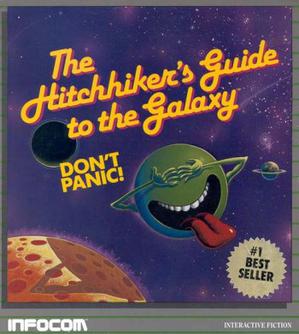
The Hitchhiker's Guide to the Galaxy is an interactive fiction video game based on the comedic science fiction series of the same name. It was designed by series creator Douglas Adams and Infocom's Steve Meretzky, and it was first released in 1984 for the Apple II, Macintosh, Commodore 64, CP/M, MS-DOS, Amiga, Atari 8-bit family, and Atari ST. It is Infocom's fourteenth game.

Wishbringer: The Magick Stone of Dreams is an interactive fiction video game written by Brian Moriarty and published by Infocom in 1985. It was intended to be an easier game to solve than the typical Infocom release and provide a good introduction to interactive fiction for inexperienced players, and was very well received.
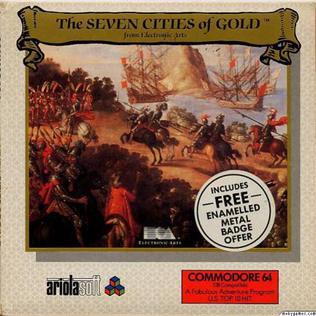
The Seven Cities of Gold is a strategy video game created by Danielle Bunten Berry and Ozark Softscape and published by Electronic Arts in 1984. The player takes the role of a late 15th-century explorer for the Spanish Empire, setting sail to the New World in order to explore the map and interact with the natives in order to win gold and please the Spanish court. The name derives from the "seven cities" of Quivira and Cíbola that were said to be located somewhere in the Southwest United States. It is considered to be one of the earliest open world video games.
The Adventure Game Toolkit (AGT) is a development system for text based adventure games.
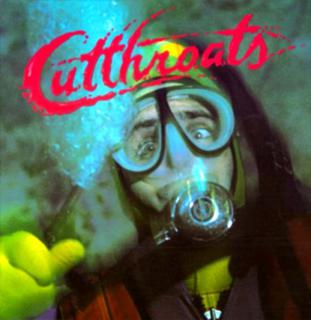
Cutthroats is an interactive fiction computer game written by Michael Berlyn and Jerry Wolper and was published by Infocom in 1984. It was released for the Amiga, Apple II, Atari 8-bit, Atari ST, Commodore 64, MS-DOS, TRS-80, TI-99/4A, and Macintosh. It is Infocom's thirteenth game.

The Pawn is an interactive fiction game for the Sinclair QL written by Rob Steggles of Magnetic Scrolls and published by Sinclair Research in 1985. In 1986, graphics were added and the game was released for additional home computers by Rainbird.
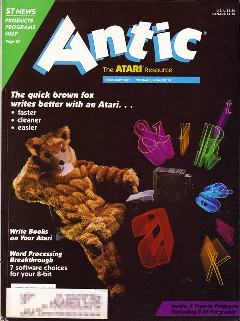
Antic was a print magazine devoted to the Atari 8-bit family of home computers and later the Atari ST. It was named after the ANTIC chip in the 8-bit line which, in concert with CTIA or GTIA, generates the display. The magazine was published from April 1982 until June/July 1990. Antic printed type-in programs, reviews, and tutorials, among other articles. Each issue contained one type-in game as "Game of the Month." In 1986, STart magazine was spun off to exclusively cover the Atari ST line.

Time Bandit is an action-adventure game written for the TRS-80 Model I by Bill Dunlevy and Harry Lafnear and published by MichTron in 1983. It was ported to the TRS-80 Color Computer and Dragon 32, but enjoyed its greatest popularity several years later as an early release for the Atari ST. It was also released for the pseudo-PC-compatible Sanyo MBC-55x with 8-color display. Amiga and MS-DOS versions were ported by Timothy Purves.

Brataccas is a science fiction action-adventure game released in 1985 for the Amiga, Atari ST, and Macintosh. It was the first game published by Psygnosis. Brataccas is built on the remains of the much-hyped vaporware project Bandersnatch, which was partially developed by Imagine Software. The storied tale of the game's development led to close press attention in the UK computer market. When Brataccas finally shipped, this attention resulted in considerable coverage in the computer press. It was generally reviewed poorly due to significant control problems, although the graphics were widely praised.
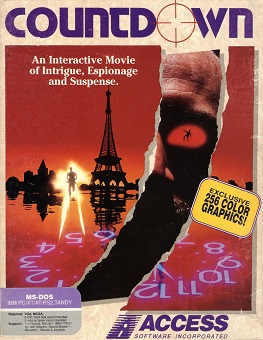
Countdown is a point-and-click adventure game released by Access Software for MS-DOS in 1990. The game was re-released on GOG.com on 26 July 2021.

Arcticfox is a science fiction tank simulation video game developed by Dynamix and published by Electronic Arts in 1986. It was published in Europe by Ariolasoft. A sequel to Dynamix's Stellar 7, Arcticfox was developed for the Amiga as one of the platform's first titles but was quickly ported to other platforms including the Atari ST, Commodore 64, ZX Spectrum, MS-DOS and Apple II. A third game was released in the series in 1991 titled Nova 9: The Return of Gir Draxon.

The Case of the Cautious Condor is an adventure video game in an interactive comic book style developed by Tiger Media. It was first released for FM Towns in Japan in 1989, then for CDTV in 1991 and MS-DOS in 1992. The game has no text: the dialogue is played only as audio.

Fahrenheit 451 is an interactive fiction game released in 1984 and based on the 1953 novel of the same name by Ray Bradbury. Originally released by software company Trillium, it was re-released in 1985 under the company’s new name Telarium.

Temple of Apshai Trilogy is a remake of three games from the Dunjonquest series, Temple of Apshai, Upper Reaches of Apshai, and Curse of Ra.

Nine Princes in Amber is an interactive fiction computer game with graphics. The game was published by Telarium, a subsidiary of Spinnaker Software, in 1985. The game is based upon the fantasy novels Nine Princes in Amber and The Guns of Avalon by Roger Zelazny.
Telarium Corporation was a brand owned by Spinnaker Software. The brand was launched in 1984 and Spinnaker was sold in 1994. The headquarters were located in Cambridge, Massachusetts, USA. The President of Telarium was C. David Seuss, the founder and CEO of Spinnaker Software.
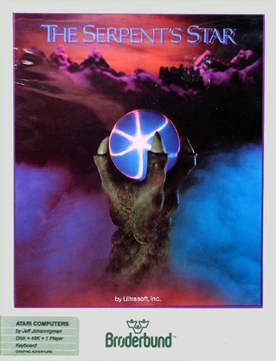
The Serpent's Star is an interactive fiction game with graphics. It was developed by Ultrasoft and published by Broderbund for the Apple II in 1983 as the sequel to The Mask of the Sun. Ports to the Atari 8-bit family (1984) and Commodore 64 (1985) followed.

Planet of Lust is a 1989 erotic text adventure game developed and self-published by Free Spirit Software, and released for Commodore 64, DOS, Atari ST, and Amiga. The Amiga version of Planet of Lust was released in Europe in April 1989. Planet of Lust is the second game in the Brad Stallion series; it is preceded by Sex Vixens from Space (1988), and succeeded by Bride of the Robot (1989) and Sex Olympics (1991).


















